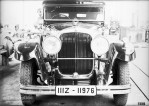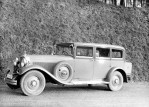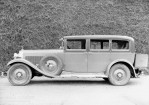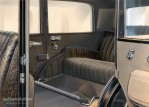Segment: Luxury
Production years: 1929, 1930
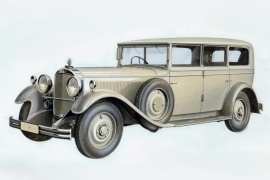 5 Photos
5 PhotosKarl Maybach designed the Typ 12 as a replacement for the former W3 and W8 models and tried to create the most luxurious vehicle on the market. It succeeded with that, and the Typ 12 also became one of the most expensive cars in the world.
When Wilhelm Maybach established its company after his departure from Mercedes-Benz, he tried to create exclusive vehicles. As a result, after a few shy attempts, he finally made it with the W3 and the W5 models. Soon, the company's name became known by the rich and wealthy of those times. But his idea also rose into his son's mind, Karl Maybach, who tried to continue his father's legacy.
As a result, he created the Typ 12 starting from scratch with a new chassis, a new powertrain, and a new cabin design. He introduced the car in 1929, and soon after, in December, Wilhelm Maybach passed away. The Typ 12 is said to be Karl's tribute to his father.
The Maybach Typ 12 was the first V12-powered vehicle on the market and boasted an impressive size for those times. At the front, the automaker placed the chromed metallic bumper mounted directly on the chassis' endings in front of the wheels. Above it were the valanced fenders that supported a cross-beam where the big and round headlights were mounted. Maybach installed the flat and vertical radiator in a recessed position to protect it in case of mild accidents.
The engine compartment was large enough to cover the massive powerplant underneath it and sported vents on the side panels to help cool it. On both sides, the automaker installed the spare wheels. In those times, tire puncture was usual. Since the vehicle was tall, the car manufacturer added side steps to ease ingress and egress to the vehicle.
The Typ 12 featured flat side panels with both doors hinged on the B-post. Thus, the driver could quickly get out and open the doors for the rear-seated passengers. At the back, the massive vehicle featured a flat vertical panel with a window on the upper side. When the car was used for long travels, it could accommodate a trunk fixed on an additional shelf behind the cabin.
Inside, the automaker placed a bench seat at the front, but it was mostly for two occupants since the floor-mounted gear stick obstructed the middle-seated one. The dash panel was flat and sported center-mounted dials for the speedometer and other gauges that showed the engine's status.
Behind, in a separate compartment divided by the front occupants with a vertical panel, Maybach installed a comfortable bench seat with a footrest. The automaker used expensive wood, leather, and fabric materials to create an exquisite, luxurious cabin.
Under the hood was a masterpiece engine for those times: an all-aluminum V12 engine with a seven-liter displacement. Maybach had vast experience in producing lightweight powerplants for airships, such as the Zeppelin, so it used those techniques when it made the Typ 12.
It paired it with a three-speed manual gearbox where the overdrive gear could be engaged without using the clutch. Only 25 units of the Typ 12 were produced between 1929 and 1930.
MAYBACH Typ 12 1929, 1930
- 7.0 V12
MAYBACH Typ 12
7.0 V12
ENGINE SPECS - 7.0 V12 | |
|---|---|
| Cylinders: | V12 |
| Displacement: | 6967 cm3 |
| Power: | 110 KW @ 3000 RPM 150 HP @ 3000 RPM 148 BHP @ 3000 RPM |
| Fuel System: | Carburetors |
| Fuel: | Gasoline |
PERFORMANCE SPECS | |
|---|---|
| Top Speed: | 91 mph (146 km/h) |
TRANSMISSION SPECS | |
|---|---|
| Drive Type: | Rear Wheel Drive |
| Gearbox: | Sequential, 3 Speed |
BRAKES SPECS | |
|---|---|
| Front: | Drums |
| Rear: | Drums |
TIRES SPECS | |
|---|---|
| Tire Size: | 32 X 6.75 |
DIMENSIONS | |
|---|---|
| Length: | 200.8 in (5100 mm) |
| Width: | 71.7 in (1821 mm) |
| Front/rear Track: | 58.7/58.7 in (1,491/1,491 mm) |
| Wheelbase: | 144.1 in (3660 mm) |
FUEL ECONOMY (NEDC) | |
|---|---|
| Combined: | 8.4 mpg US (28 L/100Km) |
| CO2 Emissions: | 666 g/km |

